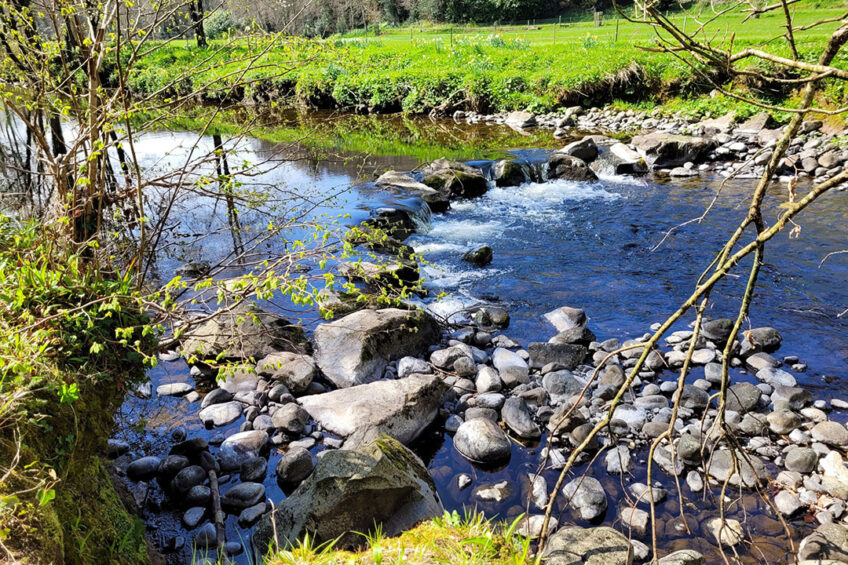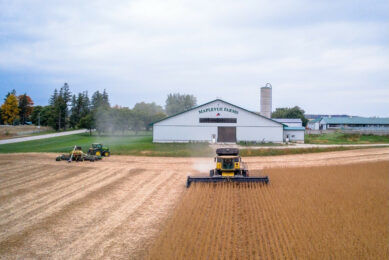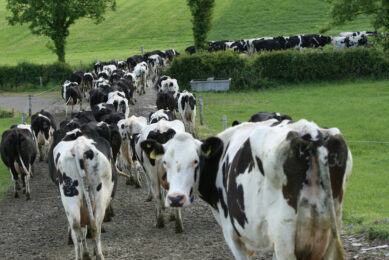Research: A look at ag phosphorus and water quality

Driving too close to waterways when spreading artificial fertiliser and farmyard manure can negatively affect water quality due to excess phosphorus.
It can take up to 70 years for phosphorus to break down from the fertiliser which in turn can cause all sorts of issues for the plant life, animals, and humans that depend upon it. That has been the subject of a recent joint study carried out by Trinity College in Dublin, Ireland and the experts from the Canadian Light Source (CLS) at the University of Saskatchewan in Canada.

The study involved collecting water and sediment samples from a number of waterways in Ireland and Sweden and using the CLS expertise to beam a light through them to determine the phosphorus content.
Armed with this information, the scientists hope to highlight the detrimental effect excess phosphorus can have on waterways to farmers in a bid to encourage more efficient fertiliser spreading.
Long term storage and release
The study’s goal, as explained by Trinity College’s Dr David O’Connell, principle investigator of the project named Eutro-SED, was to research the long-term storage and release of phosphorus in water systems.
David says: “The topic was conceived and decided upon in 2016 by myself in collaboration with Professor Laurence Gill at TCD and Professor Yongfeng Hu who is a beamline scientist at the Canadian Light Source.
“The majority of phosphorus applied to agricultural crops in the form of manure and artificial fertiliser is not utilised by the growing crop.
“A significant proportion of the phosphorus applied to crops may be washed off and accumulates in rivers, streams, lakes, and groundwaters largely in different particulate mineral and/or organic forms.
These accumulated phosphorus species are termed ‘legacy phosphorus’ which may leach back out into the water in a more biologically available and soluble form for decades, thereby impacting on surface and groundwater ecosystems,” he said.
The aims of this project included assessing the bioavailability of P (phosphorus) associated with suspended solids in agricultural catchment streams. The team at CLS used their spectroscopic techniques to determine how much phosphorus was present in the various samples from different areas of the river or stream.
Dr Yongfeng Hu, senior scientist at CLS and adjunct professor at University of Saskatchewan, explained his input into the project.
He says: “Phosphorus is a fertiliser necessary for crop production. In addition to commercial fertiliser, or inorganic P, animal manure is an important source of P.
“Over-fertilisation, as a result of agricultural activities, which is a common problem, would lead to the leaking of P into water systems. We successfully collected samples from running water, combined the lab-based analyses, and advanced characterisations through the collaboration in Canada, Ireland, and Sweden, and the bioavailability/transformation of P was revealed.

Take home message: international collaboration is necessary
“The key take home message is that international collaboration is necessary and successful and useful information about bioavailability/transformation of P is obtained for dynamic water systems,” he said.
There is little information available about the phosphorus content of different areas of waterways and sediment traps, hence making this research by the scientists quite unique and very useful.
David explains why this work was important and how beneficial it was to enlist the help of Dr Yongfeng Hu at CLS.
He adds: “Suspended sediment associated phosphorus transport is often the primary phosphorus export mechanism from agricultural catchments and can have detrimental effects on water quality.
VIDEO: Precision technology for better yields and production
In a recent video, the NPPL team visited the van Velde dairy farm in Groningen province, the Netherlands. Here they take a look at fertilisation strategies and the advantages it offers. Find out more…
“Phosphorus can be stored as ‘legacy P’ species, being released to surface water over many years which can prolong mitigation and restoration periods. It is important to be aware of this delayed effect and to maintain the many positive actions recently undertaken by farmers and agricultural stakeholders globally, which will eventually result in positive results for water quality.
“It is important people are patient and understand that restoration and remediation actions relating to suspended sediment bound P takes some time to come to fruition.
“The collaboration with Dr Yongfeng Hu at the Canadian Light Source (synchrotron) in Saskatoon provided the project partners with exclusive access to the cutting-edge advanced synchrotron radiation facilities for the investigation of temporal and spatial change in the sedimentary molecular level phosphorus forms.
These synchrotron light techniques direct electromagnetic radiation onto a sample which generate diffraction, absorption or fluorescence spectra that can be used to determine the molecular structure of the compounds present.”
“Such synchrotron light techniques are increasingly used for the characterisation of environmental samples, although there have only been few applications to mineral transformations in fluvial-dynamic environments such as fluvial sediments.”

Seasonal change
The project showed that phosphorus fractionation through chemical extractions have seasonal and temporal changes in the proportion of the various phosphorus forms from autumn to winter, including legacy P forms. David states: “Algae bioassays show seasonal change in the bioavailability of fluvial suspended sediment bound P for the Irish catchments while experiments are still in progress for the Swedish catchments.
“A combined approach using advanced synchrotron (XANES) and 31P NMR spectroscopy at the Canadian Light Source (CLS) and the University of Saskatchewan (US) examined inorganic and organic P speciation and potential contribution to catchment scale P cycling.
Furthermore, radiometric fingerprinting coupled with high-resolution distributed modelling techniques are being used to identify catchment critical source areas from where the fluvial suspended solids are likely to have originated from.”
“Controlled experiments have also been carried out in TCD laboratories to assess the bioavailability of fluvial sediment bound legacy P fractions using bioreactors.”
The climate in Ireland compared to Western Canada might be somewhat different but there are overlaps with many agricultural practice and soil types in both regions which would relate in terms of P speciation dynamics on a temporal and spatial scale.
Sustainable dairy farming, the bigger picture
If you were to describe the future of agriculture in one word, what would that word be? Many would choose the word ‘sustainable’. The global consumer-lead sustainability movement has brought real changes in science, practice, and policy, but what does it mean for the dairy nutritionist? Read more…
David said the techniques used can be applied to identify particularly vulnerable agricultural catchments susceptible to P mobilisation from fluvial sediments.
From this information mitigation measures can then be adopted by farmers to help them identify particular locations and times of the season where it is advantageous to spread manure and areas not as suitable.
Obvious measures that farmers can put into practice include avoiding manure and fertiliser spreading near river banks and having buffer strips to catch sediment runoff.










